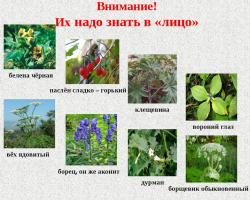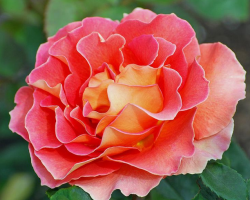Selitra and urea are the same or not - gardeners often ask such a question. Look for an answer in the article.
Content
- What kind of fertilizer of carbamide (urea): species, chemical formula
- Ammonian nitrate is urea or not: what are these fertilizers, species, chemical formula
- Ammonian nitrate and urea (urea): Is it one and the same or not?
- Ammonian nitrate and urea (urea) - comparison of properties: what is the difference, what is the difference?
- What is better to use - urea or nitrate?
- Is it possible to replace urea with ammonia nitrate?
- Is it possible to mix calcium nitrate with urea?
- Calcium nitrate instead of urea for autumn spraying
- Video: Fertilizers. Selitra VS Karbamid (urea). The pros and cons of each
- Video: urea or nitrate. What are the differences and what is better?
- Video: All about nitrogen fertilizers - which one to choose, how and when to make?
Mineral fertilizers have long been used in the garden and garden. The use of nitrogen fertilizers in the spring, at the beginning of the growing season, is especially justified.
Read on our website another article on the topic: "Nitroammofoska Fertilizer - use in the garden". You will learn how to use it for cucumbers, tomatoes, peppers, strawberries, grapes, seedlings, indoor flowers, trees, and you will also find instructions for use and reviews.
Nitrogen gives an impetus for the active growth of the plant, rapid increase in the sheet mass and the formation of the future crop. For these purposes, nitrogen fertilizers are often used - ammonium nitrate and urea. What is the difference between these fertilizers? Read this article below.
What kind of fertilizer of carbamide (urea): species, chemical formula

The second name karbamida is urea Or the diamide of carbon acid is organic fertilizer.
- Chemical Formula: (NH2) 2CO or NH2CONH2
It is produced in two types: BUT and AT. The first is used only in industry, the second is produced for growing agricultural crops.
Appearance:
- These are snow -white round granules, when rubbing which the fingers become fat.
The first way Applications:
- The urea contains 46% active nitrogen.
- It is used to feed plants in the spring-summer period.
- To assimilate nitrogen from urea, the image must turn into ammonium, and then go into the form of nitrate.
- Karbamide begins to be absorbed and act with an increase in temperature faster.
- At a temperature +10 ° C, urea begins to work in a week, and at +20 ° C acts already after 48 hours.
- It is possible to use dry granules before landing. Consumption 5 to 10 grams per square meter of square.
Upling in the soil, urea decomposes into ammonia and carbon dioxide. In this regard, it is necessary to seal into the soil to the depth at least 4-5 centimeters, to protect against weathering. Ammonia, in turn, should turn into nitrate for assimilation. Granuls are well soluble in water, therefore, they can be used in the form of a solution. The solution is prepared in the proportion 50 grams of urea on a bucket of water. Shed plants before flowering.
The second method Applications:
- The image form of nitrogen in carbamide easily penetrates through the membranes of the leaf cells and is quickly absorbed by plants.
- Therefore, it can be used as foliar top dressing on the sheet without causing a burn of the green part of the plant.
- To feed on the sheet, do 4-7% urea solution.
- The second top dressing on a mature sheet can be carried out 20% solution of carbamide.
- Nitrogen from carbamide begins to act in this form after 48 hours.
- Urea is used only in the spring, in the second half of the growing season with caution.
The third way of application:
- As a means of combating insects. Why prepare the solution and treat the bushes and trees on the bare trunk until the kidneys swell.
- Killing weevils, aphids, a copper woman. It is also used for the prevention and treatment of plants from purple spotting and boys.
- The solution is prepared based on the calculation from 500 to 700 grams of urea per 10 liters of water. The temperature should be no less +4-5 ° C.
Method of storage of urea: requires protection against moisture and completely dry room.
Ammonian nitrate is urea or not: what are these fertilizers, species, chemical formula

Ammonium nitrate is mineral fertilizer, chemical formula NH4NO3. Is ammonia nitrate or not? What is this fertilizer?
- The main difference is that in urea nitrogen is contained in amid form, and in ammonia seliter - In ammonium and nitrate.
- AT urea The nitrogen content is about 46%, and in ammonia seliter - About 34%.
- That's why urea It is attributed to highly concentrated nitrogen fertilizer.
In chemical structure, this is salt - ammonium nitrate, contains from 33 to 35% nitrogen. In appearance, round white granules, with a yellowish tint (milk-white). Selitra can be of such types:
- Ammonia - NH4NO3
- Sodium - nano3
- Kalieva - KNO3
- Calcia - CA (No3) 2
- Magnes - Mg (No3) 2
Different types of nitrate allow you to replenish the missing microelements of the soil. Therefore, often make mixtures of two salts.
- Ammonia nitrate quickly dissolves in water.
- The nitrite form of nitrogen is rapidly absorbed from the soil, even at lower temperatures.
- It is used to power plants in the spring to quickly replenish the missing nitrogen.
- It can be made before planting plants.
- Although ammonium nitrate does not evaporate from the nitrate, it is closed into the soil to the depths 10-12 centimeters.
- The gradual dissolution in irrigation or rainwater guarantees a more efficient use of fertilizer.
- If it hits the sheet, makes burns. Therefore, it is used as liquid fertilizer.
- It is made based on the calculation 7-15 grams per 1 square. Meter of the square.
- It is also possible to make under the autumn dump of the garden.
In view of the explosiveness of ammonia nitrate, special attention should be paid to storage.
Ammonian nitrate and urea (urea): Is it one and the same or not?
Both fertilizers - ammonium nitrate and urea (urea), are a source of nitrogen for plants. But, this is not the same thing.
Nitrogen content:
- In urea - 46%
- In ammonia nithera - from 33 to 35%
The factor of the fertilizer plant is also different. It is equal to urea 0.5 units, and the nitrate - 0,7. With different percentage of nitrogen in fertilizer, almost the same amount is used.
Ammonian nitrate and urea (urea) - comparison of properties: what is the difference, what is the difference?

Urea (urea) and ammonium nitrate Often used in personal plots. Both fertilizers make up for a lack of nitrogen in the soil. Their similarity is manifested in the methods of introduction, but there are differences. Here is a comparison of the properties - what is different, what is the difference:
- Urea (urea) It has an organic origin, and does not affect the soil in any way. If the soil has a slightly acidic reaction, urea encloses the soil and evens out the environment.
- Ammonium nitrate - This is a fertilizer obtained only by chemically. When introduced into the soil, it has a acidifying effect. It is undesirable to use it on acidic and podzolic soils. In such cases, simultaneously with the nitrate, lime, chalk or dolomite flour should be applied for deoxidation of the soil, but it is forbidden to mix them. On the blacksmiths, the acidifying effect of the nitrate does not manifest.
Admission to the soil - features:
- Urea It is introduced by dry granules into the ground, and due to the ability to weathering, it is closed to the depths 4-5 centimeters.
- Selitra Located to the depths 10-12 centimeters no less than for 10-14 days before the start of landing.
- Urea It is introduced at the beginning of the growing season, at temperature not lower than +10 ° C. Then, before flowering in the form of spraying along the sheet, since it does not burn the leaves. The third time - after flowering, also spraying along the sheet. For decorative plants, further use is possible.
- Selitra It is introduced in dry form in the fall, or in the spring after melting snow and before planting crops. In the future, it is introduced in the form of a solution, like top dressing under the root, but only before the stage of flowers. For foliar top dressing is not used, because it can apply burns to the leaves.
It is worth knowing: Selitra is more economically consumed. The norms of its introduction 1 kilogram per 100 square meters. meters of square.
Urea at a price is more expensive than a nitrate.
What is better to use - urea or nitrate?
The choice of fertilizer will depend on a specific situation. What is better to use?
- If you need to quickly accelerate the growth of planted crops, the nitrate should be used.
- If necessary, improve the taste of ripening fruits - you need to choose urea.
- To feed the plants after flowering, they choose foliar processing on the urea sheet.
If it is necessary to feed the plants planted on a site with acidic soils, or cultures are planted on it that do not like acidic soils - use urea.
Is it possible to replace urea with ammonia nitrate?

Given all the properties of urea and ammonium nitrate, we come to the conclusion that it is possible to replace urea with an ammonium nitrate under the following conditions:
- The top dressing of a strongly exhausted area must be done under the fall. As well as the spring pre -just soil fertilizer before planting plants, when the ambient temperature has not yet passed into a stably plus, you can successfully produce nitrate instead of urea.
- If soil acidity indicators do not fall below PH-6, and another top dressing of seedlings on schedule is required - urea can also replace the nitrate.
- Urgent plant support with nitrogen fertilizer is required - you can use ammonium nitrate.
Remember: Make selitra only under the root. Spraying on the sheet will cause burns to plants!
Is it possible to mix calcium nitrate with urea?
With the simultaneous introduction of two or more fertilizers, it is necessary to remember their compatibility. Mineral fertilizers obtained by chemically, having different origin and belonging to the opposite groups of chemical compounds, as a result of metabolic reactions often form insoluble complexes. Is it possible to mix calcium nitrate with urea?
- Urea When dissolved in water, it creates an alkaline environment. The introduction of dry granules of carbamide in the ground alkalizes the soil. It is even useful with slightly acidic soil.
- Calcium nitrate - Calcium salt of nitric acid, quickly dissolves in water, and also gives an alkaline environment. When it interacts with salts of sulfur or phosphoric acid, insoluble compounds in the form of mutet or sediment may form.
- Therefore, their mixing is undesirable.
As a result of mixing urea and calcium nitrate, a solution is formed in which the sediment is not visible during the initial consideration. But the reaction can go long. Therefore, when there is a need to mix these two fertilizers, they are mixed and dissolved, and the solution is not stored. Use immediately after cooking.
Calcium nitrate instead of urea for autumn spraying
Preventive spraying of garden crops with a solution of urea in the fall, the same as in the spring, is carried out after the fall of the last leaves from the crown of trees and shrubs. An earlier spraying can cause a foliage burn with a concentrated solution for processing trees.
- Flash -organ processing of cultures with calcium nitrate can be used instead of the use of urea.
- It is carried out for preventive purposes to eliminate root rot and various spotting and fungus.
- Processing is carried out at the stage of three real sheets, like a cucumber, before flowering, and after flowering in tomato and other vegetable crops.
- At the stage of growing seedlings, like cabbage, its planting in the ground, or at the stage of ripening of the harvest like pepper or potatoes.
- There are special proportions for each culture.
But, for autumn processing of trees in the garden, the calcium nitrate is not used. Remember this. Good and rich harvest!
Video: Fertilizers. Selitra VS Karbamid (urea). The pros and cons of each
Video: urea or nitrate. What are the differences and what is better?
Video: All about nitrogen fertilizers - which one to choose, how and when to make?
Read on the topic:








A 20% solution of carbamide on a sheet is 2 kg of carbamide per 10 liters of water? Can be 20 g/10 liters. water?